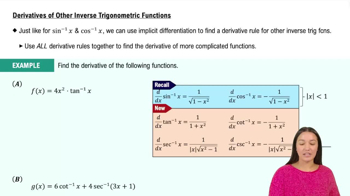Use analytical and/or graphical methods to determine the largest possible sets of points on which the following functions have an inverse.
{Use of Tech}
 Verified step by step guidance
Verified step by step guidance Verified video answer for a similar problem:
Verified video answer for a similar problem:


 5:57m
5:57mMaster Graphs of Common Functions with a bite sized video explanation from Patrick
Start learning